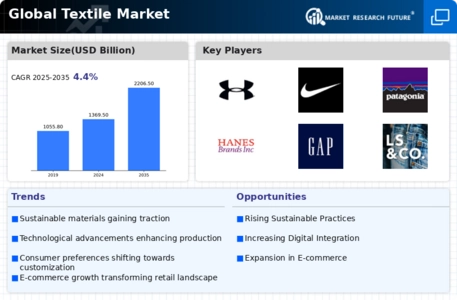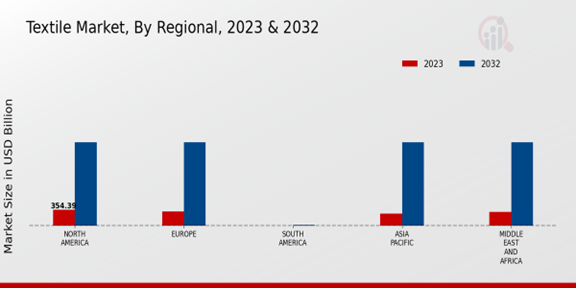Global Trade Dynamics
Global trade dynamics are a pivotal driver of the Global Global Textile Market Industry. Trade agreements and tariffs can significantly influence the flow of textiles across borders, affecting pricing and availability. For instance, favorable trade agreements can lower costs for manufacturers and consumers alike, while tariffs may hinder market access. The ongoing evolution of trade policies, particularly in major markets like the United States and the European Union, will likely shape the competitive landscape. As the industry adapts to these changes, it is essential for stakeholders to remain agile and responsive to shifting trade conditions.
Sustainable Practices
The Global Global Textile Market Industry is increasingly influenced by the adoption of sustainable practices. Consumers are becoming more environmentally conscious, leading to a demand for eco-friendly materials and production processes. Brands are responding by integrating sustainable textiles, such as organic cotton and recycled polyester, into their offerings. This shift not only addresses consumer preferences but also aligns with global sustainability goals. As a result, the market is projected to reach 1369.5 USD Billion in 2024, with sustainability initiatives playing a crucial role in driving growth and innovation within the industry.
Market Growth Projections
The Global Global Textile Market Industry is poised for substantial growth, with projections indicating a market size of 1369.5 USD Billion in 2024 and an anticipated rise to 2206.5 USD Billion by 2035. This growth trajectory suggests a compound annual growth rate of 4.43% from 2025 to 2035. Such figures highlight the industry's resilience and adaptability in the face of changing consumer preferences and global economic conditions. Stakeholders are likely to capitalize on emerging trends and technologies to drive innovation and maintain competitiveness in this dynamic market.
Rising Disposable Incomes
Rising disposable incomes in emerging economies are significantly impacting the Global Global Textile Market Industry. As consumers in regions such as Asia-Pacific experience increased purchasing power, their demand for textiles, particularly in fashion and home furnishings, is on the rise. This trend is evident in countries like India and China, where a burgeoning middle class is driving consumption patterns. Consequently, the market is likely to see substantial growth, with a compound annual growth rate of 4.43% anticipated from 2025 to 2035. This economic shift presents opportunities for brands to expand their reach and cater to evolving consumer preferences.
Technological Advancements
Technological advancements are reshaping the Global Global Textile Market Industry, enhancing efficiency and product quality. Innovations such as digital printing, automation, and smart textiles are revolutionizing production processes. For instance, digital printing reduces waste and allows for customization, appealing to modern consumers. Furthermore, the integration of technology in supply chain management improves transparency and traceability, which are increasingly demanded by consumers. As these technologies become more prevalent, they are expected to contribute to the market's growth, with projections indicating a rise to 2206.5 USD Billion by 2035.
Consumer Trends Towards Fast Fashion
The rise of fast fashion continues to be a major driver in the Global Global Textile Market Industry. Consumers are increasingly seeking affordable, trendy clothing that aligns with their rapidly changing preferences. This demand has led to a surge in production and consumption, with brands responding by shortening lead times and increasing inventory turnover. However, this trend also raises concerns regarding sustainability and ethical production practices. As the market evolves, it will be crucial for brands to balance consumer demand for fast fashion with the need for responsible sourcing and manufacturing practices.




















